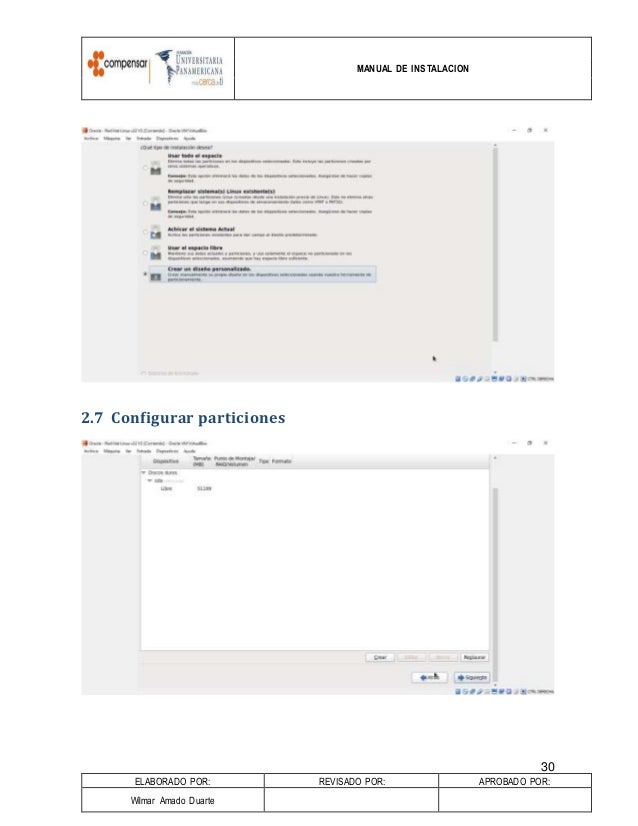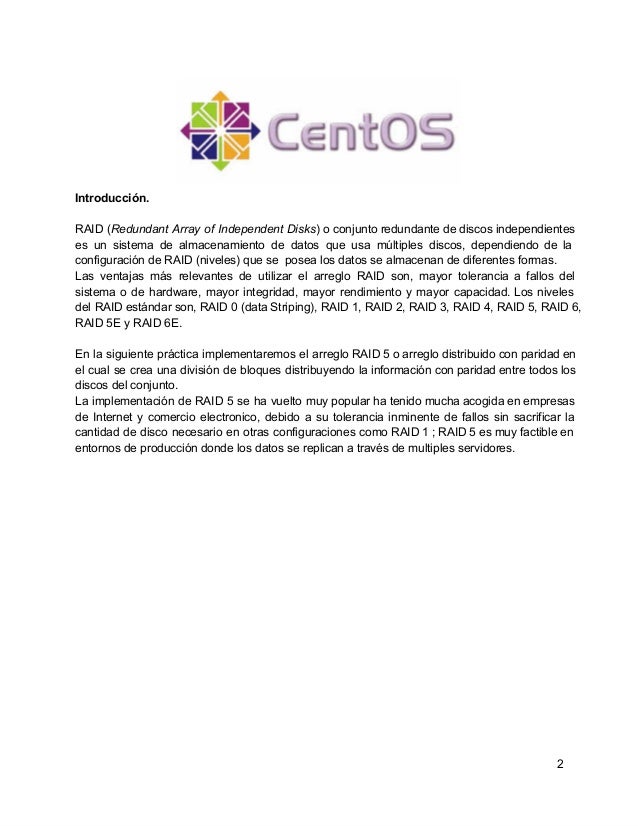CentOS is mostly used as Server. So you will want to give it a static IP address. By default CentOS interface is configured to receive IP from DHCP server. Here I will show you how to configure static IP address in CentOS system. Configure Static IP Address in CentOS. The following steps will show configuration of static IP address in CentOS. CentOS is a most popular and widely used Linux distribution from the RedHat Enterprise family. This CentOS 6.10 release is based on the upstream release Red Hat Enterprise Linux 6.10 comes with bug fixes, new functionalities & updates. It is strongly recommended to read the release notes as well as the upstream technical notes about the changes before an installation or up-gradation. Welcome to the CentOS 6.6 release. CentOS is an Enterprise-class Linux Distribution derived from sources freely provided to the public by Red Hat 1. CentOS conforms fully with Red Hat's redistribution policy and aims to be functionally compatible. (7 replies) Hey all, I just went looking for some manuals for a friend of mine who is new to Linux. I installed CentOS 6.5 on his machine. The CentOS.org web site has documentation up to CentOS 5. CentOS has released its major release of CentOS 7.6 on 3rd December 2018, a month later the release of RHEL 7.6. Since from the day of release, you might be looking for upgrading the current version to latest CentOS release. This post is mainly focusing on upgrading the previous version of CentOS 7.x to the latest version (Centos 7.6 at the time writing). The CentOS Project. The CentOS Project is a community-driven free software effort focused on delivering a robust open source ecosystem around a Linux platform. We offer two Linux distros: – CentOS Linux is a consistent, manageable platform that suits a wide variety of deployments. The netinstall isos do not work with UEFI installs, but the minimal or DVD isos do work with UEFI. No versions of CentOS-6.6 will work with Secure Boot turned on. Secure Boot must be disabled to install CentOS-6.6. (For further detail please take a look at CentOS Bug #0006321). With this release the ABI for the X.org video drivers changes, possibly resulting in a failing X-Session.
CentOS is a most popular and widely used Linux distribution from the RedHat Enterprise family. This CentOS 6.10 release is based on the upstream release Red Hat Enterprise Linux 6.10 comes with bug fixes, new functionalities & updates.
It is strongly recommended to read the release notes as well as the upstream technical notes about the changes before an installation or up-gradation.
Upgrade CentOS 6.x to CentOS 6.10
Those who looking to upgrade from previous CentOS 6.x to a new major CentOS 6.10 version, they can simply run the following yum command to upgrade their system seamlessly from any earlier CentOS Linux 6.x release to 6.10.
We highly suggest you to perform a fresh CentOS 6.10 installation rather than upgrading from other older CentOS versions.
In this article, we will take you through the steps of performing a minimal CentOS 6.10 network installation, where you install a very minimum set of software, necessary for booting the kernel and performing basic functions on your server, without a graphical user interface (GUI). It allows you to set a foundation for building a future customizable server platform.
Download CentOS 6.10 Net Install
If you’re looking for fresh CentOS 6.10 installation, then download the .iso images from the links provided below and follow the installation instructions with screenshots mentioned below.
- CentOS-6.10-i386-netinstall.iso [32-bit]
- CentOS-6.10-x86_64-netinstall.iso [64-bit]
CentOS 6.10 Network Installation Guide
1. First start by downloading the CentOS 6.10 Network Install ISO and then create a bootable USB stick using LiveUSB Creator called Rufus, Unetbootin or terminal based Bootiso.
2. Next boot your system using the bootable USB or CD, at the Grub menu, select Install or upgrade existing system and hit enter.
3. Next, skip testing of the installation media to start the installation of the system.
CentOS 6.10 Media Testing

4. Choose the language you would like to use for the installation process, and press Enter.
5. Select the keyboard layout you would like to use, and use the right arrow key select OK, and press Enter.
CentOS 6.10 Keyboard Layout
6. Now specify the installation method, since it is a network installation, choose URL and then press OK and hit Enter.
7. Next, configure TCP/IP for connections as shown in the screenshot below.
CentOS 6.10 TCP/IP Configuration
8. Now configure the CentOS 6.10 Netinstall URL, it is recommended to choose a nearest mirror from the available CentOS mirrors list.
Example mirror.liquidtelecom.com
- http://mirror.liquidtelecom.com/centos/6.10/os/i386/ – [32-bit]
- http://mirror.liquidtelecom.com/centos/6.10/os/x86_64/ – [64-bit]
9. After providing the URL and clicking OK, wait for the installer to retrieve the ISO image (this may take sometime, but it should be fast with a good internet connection).
CentOS 6.10 Image Retrieving
10. After successfully retrieving the ISO image, the CentOS Graphical Installer will be launched, as shown in the following screenshot. Click on Next to proceed.
11. Next, choose the type storage devices (basic or specialized) to be used for the installation and click Next.
CentOS 6.10 Installation Storage Device
12. Next, select the option to clear data on the storage disk by selecting Yes, discard any data and click Next.
13. Set the Hostname and click Next.
Set CentOS 6.10 Hostname
14. Set the Timezone for your location and click Next to proceed.
15. Set the root user password and click Next to continue.
Set CentOS 6.10 Root Password
16. Now you need to specify the type of installation you want. Read the descriptions of the options carefully and select the appropriate one. If you want to use the whole disk space, choose Use All Space, but to perform a custom installation, choose Create Custom Layout.
17. The installer will review and modify partition layout. If everything is ok, clik Next.
CentOS 6.10 Device Partition Summary
18. Next, apply the disk partitioning scheme created by selecting Write changes to disk and then click Next to proceed.
CentOS 6.10 Disk Write Changes
19. In this step, you need to choose the default set of software to be installed on your system. For the purpose of this guide, we will use Minimal and click Next. Thereafter, the installation process will be started.
20. At this point, the actual installation of the system (copying of files) to disk will now start. When it is done, click on Reboot.

CentOS 6.10 Installation Process
21. Once you have rebooted the system, you will land at login page as shown in the screenshot below. Finally, log into your CentOS 6.10 server with the root credentials.
CentOS 6.10 Root Login
Congratulations! You have successfully installed CentOS 6.10 server using network installation media. If you have any questions or thoughts to share, use the feedback from below to reach us.
I have created a CentOS server in a virtual machine and now I would like to know how to install programs from scratch, without using yum or rpm. Every search I've tried on how to go about finding each individual program and what commands I would use to install them has returned very useful information on why using yum would be so much better and how to install yum if I don't have it.
So basically all I want to know are how to find the download links to individual programs,how to download them (since I'm using only text I'm unfamiliar with this whole process), and what commands I need to use to install them once I have them.
Thanks guys!

closed as off topic by SWeko, Mario Sannum, Dancrumb, Steven Penny, Andrew AlcockFeb 7 '13 at 0:45
Questions on Stack Overflow are expected to relate to programming within the scope defined by the community. Consider editing the question or leaving comments for improvement if you believe the question can be reworded to fit within the scope. Read more about reopening questions here. If this question can be reworded to fit the rules in the help center, please edit the question.
2 Answers
When in rome, man. They're telling you to do it that way because CentOS really prefers rpm-based packages. They're easier to manage, upgrade, uninstall, etc.
However since this is a learning exercise, ignore all of that.
Each piece of software is unique, and you need to read the installation instructions that come with the source code for the project. A good chunk of software out there uses a system called 'automake' whose commands are usually very predictable. The experience is usually something like this:
- Download the source code from a website (often comes are a .tar.gz or .zip) You can use
wgetto download files from websites. - Extract the source code locally (using tar or unzip)
- Set some compiler variables (don't do this unless you know what you're doing -- the defaults are usually sufficient, esp. for a learning exercise). e.g.
export CFLAGS='-O2 -pipe' - Run the configure script with
--helpto determine what kinds of options are configurable../configure --help - Run configure with the options you want:
./configure --prefix=/usr/local --enable-option1 --with-library=/path/to/lib --without-cowbell - This will set up the project to be compiled. Now you need to run make. Just type
make - Once everything has compiled (assuming there are no compile errors) run
make install. You have to run this command as root usually. - Tada. The package has been installed from source.
There are of course other compile systems out there (cmake for example) but I won't cover all of them. Things will break for you. Google is your friend when this happens. Usually it's due to (a) shitty source code, or (b) missing / out of date libraries on your system.
Also keep in mind that just because a package compiles doesn't mean it will work out of the box for you. Most packages need a certain amount of configuration to actually run properly, so be sure to read any documentation available to you.
EDIT
Also, if you REALLY want the FULL experience, there's always linux from scratch which can, and will teach you everything you were afraid to ask about compiling things from source.
Chris EberleChris EberleCompiling archive like tar.bz2. Use ./configure , make and after sudo make install.
Mihai8